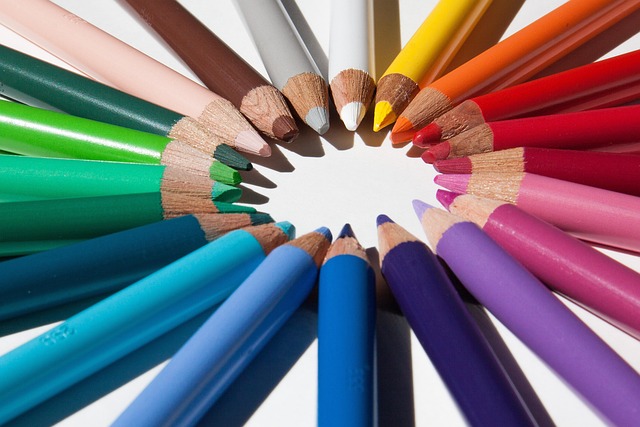Environmental Typography in Graphic Design
Table of Contents
Environmental typography is a big trend in graphic design. It mixes imagination with the climate to create vivid, practical designs. It includes using typography in engineering, interior design, and outdoor spaces. This makes communication both stylish and practical. This article explores ecological typography. It examines graphic design and its link to failing strategies in the design process. This guide, “Ecological Typography Graphic Design,” aims to help designers and fans.
What is environmental typography?
Environmental typography is the craft of blending typography with real spaces. Here, text becomes part of the environment, not just a standalone element. This trend goes beyond conventional graphic design. It installs text into walls, floors, signage, and other designs.
The motivation behind ecological typography isn’t just embellishing; it is useful. It aids in wayfinding, marking, and storytelling. Plus, it enhances the style of a space. For instance, a shopping center might use typography on walls and floors to direct guests. A gallery could use concise text to explain stories or displays.
This new method blends creativity with common sense. It is key to today’s graphic design.
Description of Environmental Typography Trends in Graphic Design
Ecological typography has evolved a lot. It shows progress in materials, technology, and design ideas. The following are a few critical parts of this trend:
1. Material Advancement
Fashioners now use materials like wood, metal, acrylic, and neon. This lets them create strong, eye-catching typography. These materials allow text to mix into any setting. It could be a city street or a posh hotel.
2. Mechanical Joining
The utilization of advanced devices and programming has reformed environmental typography. Dynamic, intuitive plans now use projection planning, drove screens, and increased the truth. For example, a public place with computers can change its fonts based on the time of day or the flow of people.
3. Manageability in the Plan
With developing environmental worries, originators are embracing eco-friendly materials and cycles. Environmental typography projects often use recycled materials and energy-efficient lighting. This aligns design trends with sustainability goals.
What does the environmental typography trend entail in graphic design?

Environmental typography in graphic design has a few key elements. They make it special and important.
1. Combination with Engineering
Typography is not just for print or screens. It includes structures, interiors, and landscapes. Draftsmen and fashioners team up to make the type fit the design. It must serve both form and function.
2. Improving Client Experience
By integrating typography into actual spaces, designers create a vivid encounter. For example, airport directional signs help travelers and enhance the terminal’s style.
3. Narrating Through Spaces
Typography in spaces can describe stories or pass on messages. A social community could use text to feature verifiable events or important characters. This would turn the space into an engaging storytelling medium.
4. Useful Correspondence
Ecological typography guarantees that correspondence is both compelling and visually satisfying. Road signs, corporate logos, and floor text in historic sites inform.
The Job of Collapsing in Graphic Computerization Creation Cycles
Collapsing is a key prepress step in graphic computerization. It’s vital for printed materials like leaflets, guides, and handouts. Ecological typography focuses on spaces. But, collapsing harms printed plans’ creation and use. The following is an itemized clarification of collapsing and its importance:
1. Definition and Types of Collapsing
Collapsing includes bowing or wrinkling paper to make a particular design. Normal crease types include:
Barrel Overlay: Makes a major impact by collapsing internal paper.
Accordion Overlap: Various elements fold, creating a crisscross example.
Door Overlay: Opens like an entryway, ideal for imaginative plans.
Each crease type fills a need. Designers pick it based on the plan’s practical and stylish requirements.
2. Significance of Collapsing
Collapsing changes a level piece of paper into an organized and useful piece. For instance:
Leaflets: Legitimate collapsing guarantees clear areas for data.
Maps: Smaller folds make maps versatile and simple to use.
Not possible to remove the adverb.
3. Scoring for Amazing Folds
Scoring is the most common way of making a wrinkle to direct the overlay. Heavier or coated paper is vital. It stops breaking and ensures clean creases. Appropriate scoring upgrades the quality of the end result.
How Collapsing and Environmental Typography Adjusts
Environmental typography and collapsing are different design fields. But they both value accuracy and usefulness. The following are a few different ways they adjust:
1. Upgrading Typography Show
Typography reveals itself through collapsing coordinates on paper materials. A tri-overlap handout can include clear text sections that share the intended message. Likewise, in environmental typography, the arrangement of text guarantees perceivability and effect.
2. Association and Client Commitment
Both collapsing and ecological typography mean making connections with encounters. Collapsing empowers smart printed plans. Ecological typography invites users to connect with spaces.
3. Viable and Tasteful Equilibrium
The two cycles balance usefulness and style. Collapsing improves print plans’ convenience. Ecological typography boosts spaces’ graphic and utilitarian appeal.
Ways to Execute Environmental Typography
Fashioners can use these tips to leverage ecological typography in their work:
1. Pick the Right Materials
Select materials that line up with the climate and reason. For outside spaces, use climate-safe materials like metal or acrylic.
2. Centered on Neatness
Guarantee that the typography is not difficult to peruse in a good way. Utilize fitting text styles, sizes, and spacing to improve permeability.
3. Integrate Maintainability
Decide on eco-accommodating materials and cycles to limit environmental effect. Use reused materials and energy-efficient lighting arrangements.
4. Team up with specialists.
Work with modelers, inside creators, and architects. Ensure the typography fits the space.
5. Test Plans Completed
Make mockups or models. Test the typography’s usefulness and appearance before finalizing it.
FAQs
1. What is ecological typography in graphic depiction?
Environmental typography includes coordinating text into actual spaces to improve usefulness and feel.
2. How does collapsing connect with typography?
Collapsing influences typography in printed plans. It ensures clear communication and easy use.
3. What materials do designers use in environmental typography?
Normal materials are wood, metal, acrylic, and neon. Eco-friendly options include recycled plastic.
4. How might environmental typography further develop the client experience?
It creates vivid, practical conditions that help, illuminate, or connect with clients. It does this by consolidating text and spaces.
Conclusion:
Ecological typography is a graphic design trend. It blends text with real spaces. The goal is to create useful, eye-catching designs. It boosts communication, client experience, and aesthetics. So, it’s vital to the current plan. Collapsing in graphic design plays a key role in the creation process. It ensures usability and quality in printed materials.
Knowing the rules of environmental typography and collapsing can empower designers. They can do great things. They can balance creativity with practicality. This article (for search engines, highlights the trend’s importance. It gives key insights to both experts and enthusiasts.





